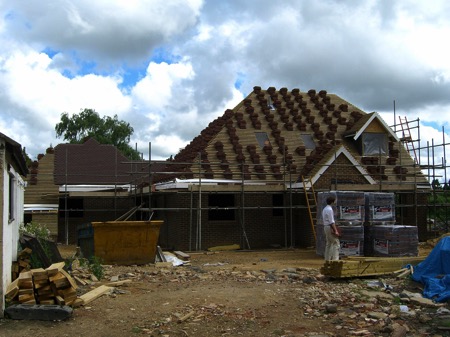Chartered Surveyors
Dangerous pitfalls and heavy costs when extending or refurbing
28/10/15 19:07 Filed in: Property

As housing sales drop 13% and people stay put, tips on avoiding dangerous pitfalls and heavy costs when extending or refurbing.
By David Lewis, partner at Grillo LLP Chartered Surveyors, Surrey.
The latest Land Registry figures show that the number of house sales in England and Wales for June dropped by 13% since June 2014.
By contrast, the number of residential planning applications rose by 10% between April and June this year, according to the Department for Communities and Local Government.
This suggests the property market is stuttering as people are concerned about Stamp Duty and the cost of moving. And with planning relaxed, they are opting to stay put and make changes to their existing home.
But with increased demand for builders to extend and refurb, and the shortage of builders, costs are rising and it is vital to have someone monitoring them. Grillo LLP Chartered Surveyors are very experienced designers and project managers and recommend the following steps to avoid heavy costs.
1. Before you start, thoroughly consider what you are trying to achieve. Take advice from a reputable professional firm as an objective view from a third party can be helpful.
2. Make sure that before you appoint them, your designer has an intimate knowledge of building design and techniques. This is especially important when dealing with the details and materials in buildings of different periods and areas in West Surrey, West Sussex and East Hampshire.
3. It is also essential when designing alterations for Listed Buildings to get the Conservation Officer to agree. So, find a firm of professionals who know the historic details of period properties and therefore can have a useful discussion with the Conservation Officer.
4. Ensure that your designer has a comprehensive working knowledge of the Building Regulations, so that your plans comply. Without such knowledge, he or she will cost you unnecessary time and money having non-compliant details changed.
5. Be aware of physical constraints of the site. There may be a watercourse and high water table or a steep-sided bank or retaining wall, which can affect the potential use of the building and the construction work. If your designer doesn’t take these into account in the initial site appraisal, the cost of having to undertake expensive additional work might come as a nasty surprise later in the project.
6. Avoid disputes over the quality and the extent of work included in the contract price, by insisting on a comprehensive specification being prepared, based on Building Regulations and the approved design.
7. Make sure you get a professional like a Chartered Surveyor, project manager or architect to both design and oversee the building work. This will prevent disputes with builders over standards and the quality of work. Such disputes can lead to work remaining unfinished while legal matters are pursued, or after the work is finished, disagreement continuing over payment.
“Whilst carrying out Surveys of Condition for prospective purchasers, we sometimes discover that an extension was built or an alteration had been made without Building Regulation Consent,” says David Lewis, partner at Grillo LLP. “A frantic scramble can ensue whilst the vendor obtains the Completion Certificate.
“Lastly, a complete set of paperwork with all the Consents and Certificates means that any sale of the property will go ahead quickly without the extra cost of a lawyer’s time chasing around for the information, or, alternatively, without the cost of insurers providing an Indemnity Policy where the paperwork is not in place.”
Grillo LLP Chartered Surveyors
Telephone: 01483 860600
Website: www.grillollp.com